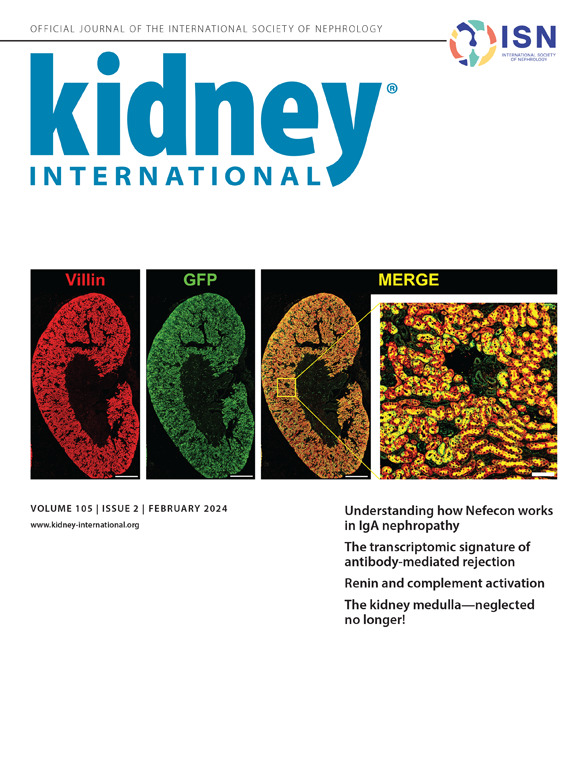足细胞老化与糖尿病肾病
IF 14.8
1区 医学
Q1 UROLOGY & NEPHROLOGY
引用次数: 0
摘要
足细胞损伤引起一系列细胞变化,包括肥大、去分化、衰老、凋亡和脱离。尽管有证据表明足细胞衰老在糖尿病肾病中起着关键作用,但确切的触发因素和潜在的机制仍然难以捉摸。在这项研究中,Li等人发现g蛋白偶联受体GPR124通过抑制局灶黏附激酶来防止足细胞衰老。这些发现强调GPR124/局灶黏附激酶轴可能成为糖尿病肾病治疗的新靶点。本文章由计算机程序翻译,如有差异,请以英文原文为准。
Podocyte aging and diabetic kidney disease
Podocyte injury causes a series of cellular changes, including hypertrophy, dedifferentiation, senescence, apoptosis, and detachment. Although evidence suggests a pivotal role of podocyte senescence in diabetic kidney disease, the exact triggers and underlying mechanism remain elusive. In this study, Li et al. uncover that GPR124, a G-protein–coupled receptor, protects against podocyte senescence by inhibiting focal adhesion kinase. These findings underscore that the GPR124/focal adhesion kinase axis could be a novel target for diabetic kidney disease therapy.
求助全文
通过发布文献求助,成功后即可免费获取论文全文。
去求助
来源期刊

Kidney international
医学-泌尿学与肾脏学
CiteScore
23.30
自引率
3.10%
发文量
490
审稿时长
3-6 weeks
期刊介绍:
Kidney International (KI), the official journal of the International Society of Nephrology, is led by Dr. Pierre Ronco (Paris, France) and stands as one of nephrology's most cited and esteemed publications worldwide.
KI provides exceptional benefits for both readers and authors, featuring highly cited original articles, focused reviews, cutting-edge imaging techniques, and lively discussions on controversial topics.
The journal is dedicated to kidney research, serving researchers, clinical investigators, and practicing nephrologists.
 求助内容:
求助内容: 应助结果提醒方式:
应助结果提醒方式:


